 Search by Keyword
Sign Up Below for our MONTHLY BEATLES TRIVIA QUIZ!
|
“WHAT GOES ON?”
(John Lennon – Paul McCartney – Richard Starkey)
 On October 13th, 1965, Paul McCartney and Ringo Starr were driven over to John Lennon’s Kenwood home in Weybridge, Surrey with one important order of business. This was to compose a three-way collaborative effort for inclusion on their next album “Rubber Soul.” They all sat down at the kitchen table with paper and pens and, with guitars in hand, composed what would become the first and only three-person Beatles song, the results being the Grammy-award winning song “What Goes On?” On October 13th, 1965, Paul McCartney and Ringo Starr were driven over to John Lennon’s Kenwood home in Weybridge, Surrey with one important order of business. This was to compose a three-way collaborative effort for inclusion on their next album “Rubber Soul.” They all sat down at the kitchen table with paper and pens and, with guitars in hand, composed what would become the first and only three-person Beatles song, the results being the Grammy-award winning song “What Goes On?”
 Well…OK, it didn’t really happen that way. In fact this is the farthest from the truth. While the real story is hardly as glamorous, it has become a piece of history if only for the reason of it being an indelible component of The Beatles immense catalog. Not the topper of anyone’s “favorites” list and considered by most as “album filler,” examination shows the song as effectively conveying a convincing message within the framework of a well-written melody line and chord structure. Maybe we all need to reconsider its worth. Well…OK, it didn’t really happen that way. In fact this is the farthest from the truth. While the real story is hardly as glamorous, it has become a piece of history if only for the reason of it being an indelible component of The Beatles immense catalog. Not the topper of anyone’s “favorites” list and considered by most as “album filler,” examination shows the song as effectively conveying a convincing message within the framework of a well-written melody line and chord structure. Maybe we all need to reconsider its worth.
Songwriting History
When asked in 1972 by Hit Parader magazine who wrote “What Goes On?,” John Lennon answered: “Me. A very early song of mine.” In 1980, he explained to Playboy magazine, “That was an early Lennon, written before The Beatles, when we were The Quarry Men, or something like that.”
 “The Quarry Men,” which was named after Quarry Bank High School where John and most of the original members attended, had a performance life between 1957 and 1960. Paul McCartney joined the group in July of 1957 as did George Harrison in 1958. By 1960, the group changed their name various times (accounts report “Johnny And The Moondogs” and “The Silver Beetles” among others), so the song “What Goes On?” was apparently written during this four year time period, although there is no evidence that it was ever performed by the group. “The Quarry Men,” which was named after Quarry Bank High School where John and most of the original members attended, had a performance life between 1957 and 1960. Paul McCartney joined the group in July of 1957 as did George Harrison in 1958. By 1960, the group changed their name various times (accounts report “Johnny And The Moondogs” and “The Silver Beetles” among others), so the song “What Goes On?” was apparently written during this four year time period, although there is no evidence that it was ever performed by the group.
 However, it was originally somewhat different from what we’re familiar with on the 1965 released "Rubber Soul" album. Lennon described this mid '60s version of "What Goes On?" to Playboy Magazine in 1980 as “resurrected with a middle-eight thrown in, probably with Paul’s help, to give Ringo a song and also to use the bits, because I never like to waste anything.” John and Paul most times referred to a song's bridge as a “middle-eight” but in this case, “What Goes On?” doesn’t have one. In the released version, it has a repeatable chorus (“What goes on in your heart…”) and a set of verses (“The other day I saw you as…”). However, it was originally somewhat different from what we’re familiar with on the 1965 released "Rubber Soul" album. Lennon described this mid '60s version of "What Goes On?" to Playboy Magazine in 1980 as “resurrected with a middle-eight thrown in, probably with Paul’s help, to give Ringo a song and also to use the bits, because I never like to waste anything.” John and Paul most times referred to a song's bridge as a “middle-eight” but in this case, “What Goes On?” doesn’t have one. In the released version, it has a repeatable chorus (“What goes on in your heart…”) and a set of verses (“The other day I saw you as…”).
 While John's explanation to Playboy makes it appear that his original composition consisted only of a repeating chorus, this is cleared up when examining his reference to "What Goes On?" in his 1972 Hit Parader Magazine interview. He states: “Ringo and Paul wrote a new middle-eight together when we recorded it.” Therefore, John did originally write a "middle-eight" (that is to say, "verse") for the song back in the late '50s, this being replaced with new verses just prior to its recording in 1965 for the “Rubber Soul” album. Interestingly, an acetate that contained an early demo of "What Goes On?" recorded by John and Paul in 1963 (detailed below) has been discovered that displays a repeated verse that Lennon had originally written. While the chorus is relatively unchanged from what we've come to know, the lyrics of the verse contained on this rare recording are: "How can I conseal / the thrill that I feel / is our love still real / tell me here / is it so / I wanna know." While John's explanation to Playboy makes it appear that his original composition consisted only of a repeating chorus, this is cleared up when examining his reference to "What Goes On?" in his 1972 Hit Parader Magazine interview. He states: “Ringo and Paul wrote a new middle-eight together when we recorded it.” Therefore, John did originally write a "middle-eight" (that is to say, "verse") for the song back in the late '50s, this being replaced with new verses just prior to its recording in 1965 for the “Rubber Soul” album. Interestingly, an acetate that contained an early demo of "What Goes On?" recorded by John and Paul in 1963 (detailed below) has been discovered that displays a repeated verse that Lennon had originally written. While the chorus is relatively unchanged from what we've come to know, the lyrics of the verse contained on this rare recording are: "How can I conseal / the thrill that I feel / is our love still real / tell me here / is it so / I wanna know."
 Also clarified here is that Ringo did in fact contribute to the writing of the new verses for the 1965 recording of the song. Author Barry Miles, in his 1997 biography of Paul’s career entitled “Many Years From Now,” confirmes this about completing "What Goes On": “John dusted it off and Paul and Ringo wrote a new middle-eight for it.” When asked in 1966 about his input to this collaboration, Ringo replied, “I contributed about five words to ‘What Goes On.’ I haven’t done a thing since.” Also clarified here is that Ringo did in fact contribute to the writing of the new verses for the 1965 recording of the song. Author Barry Miles, in his 1997 biography of Paul’s career entitled “Many Years From Now,” confirmes this about completing "What Goes On": “John dusted it off and Paul and Ringo wrote a new middle-eight for it.” When asked in 1966 about his input to this collaboration, Ringo replied, “I contributed about five words to ‘What Goes On.’ I haven’t done a thing since.”
Recording History
 “I was always saying to The Beatles, ‘I want another hit, come on, give me another hit.’” This command from George Martin was particularly valid back in the early months of 1963 when a follow-up to their first British chart-topper “Please Please Me” was needed. Therefore, on March 5th, 1963, at around 2:30 in the afternoon, the group assembled for a session in EMI Studio Two to show him what they had. “I was always saying to The Beatles, ‘I want another hit, come on, give me another hit.’” This command from George Martin was particularly valid back in the early months of 1963 when a follow-up to their first British chart-topper “Please Please Me” was needed. Therefore, on March 5th, 1963, at around 2:30 in the afternoon, the group assembled for a session in EMI Studio Two to show him what they had.
George Martin recalls, “I would meet them in the studio to hear a new number. I would perch myself on a high stool and John and Paul would stand around me with their acoustic guitars and play and sing it – usually without Ringo or George, unless George joined in the harmony. Then I would make some suggestions to improve it, and we’d try it again. That’s what is known in the business as a ‘head arrangement.’”
 On this occasion, The Beatles premiered four songs to George Martin for consideration as their next single, two newly written compositions and two written many years before. The two first chosen by George Martin were the recently written numbers, “From Me To You” and “Thank You Girl,” the former becoming their next British #1 single and the latter becoming its b-side. With a little studio time left, one of the older written songs began life in the studio, this being “One After 909,” although this was never finished nor released at the time. The other older written song that they didn’t have time for that day was an early incarnation of “What Goes On,” at this time a full John Lennon composition. A demo version of this song was put to tape, this consisting of acoustic guitar along with John and Paul's vocals. While an acetate of this demo version was created (detailed above), this song was deemed the least suitable for proper recording and apparently didn’t get past the George Martin “high stool” test. On this occasion, The Beatles premiered four songs to George Martin for consideration as their next single, two newly written compositions and two written many years before. The two first chosen by George Martin were the recently written numbers, “From Me To You” and “Thank You Girl,” the former becoming their next British #1 single and the latter becoming its b-side. With a little studio time left, one of the older written songs began life in the studio, this being “One After 909,” although this was never finished nor released at the time. The other older written song that they didn’t have time for that day was an early incarnation of “What Goes On,” at this time a full John Lennon composition. A demo version of this song was put to tape, this consisting of acoustic guitar along with John and Paul's vocals. While an acetate of this demo version was created (detailed above), this song was deemed the least suitable for proper recording and apparently didn’t get past the George Martin “high stool” test.
 With just over half of their “Rubber Soul” album completed as of November 4th, 1965, and with a December 3rd release date fast approaching, the group prepared “What Goes On?” to finally be suitable for recording and release. With a new set of verses written by Paul and Ringo, they entered EMI Studio Two on this day at 11 pm for a late night session to get more needed work done for the album. With just over half of their “Rubber Soul” album completed as of November 4th, 1965, and with a December 3rd release date fast approaching, the group prepared “What Goes On?” to finally be suitable for recording and release. With a new set of verses written by Paul and Ringo, they entered EMI Studio Two on this day at 11 pm for a late night session to get more needed work done for the album.
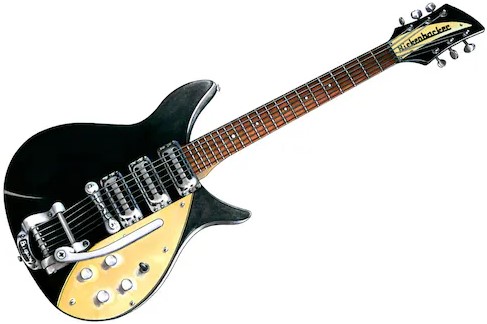 Much preparatory work was first required, so with all the arrangement bugs worked out they recorded only one take of the rhythm track, which was deemed good enough. The instrumentation consisted of John on electric rhythm guitar, George on lead guitar, Paul on bass and Ringo on drums, as well as an off-microphone guide vocal. Also noticeable on the rhythm track are off-the-cuff remarks and voices from the other group members, such as what sounds like John yelling out “I already TOLD you why” after Ringo sings “tell me why” at the end of the second verse, most likely a reference to their 1964 composition “Tell Me Why.” Much preparatory work was first required, so with all the arrangement bugs worked out they recorded only one take of the rhythm track, which was deemed good enough. The instrumentation consisted of John on electric rhythm guitar, George on lead guitar, Paul on bass and Ringo on drums, as well as an off-microphone guide vocal. Also noticeable on the rhythm track are off-the-cuff remarks and voices from the other group members, such as what sounds like John yelling out “I already TOLD you why” after Ringo sings “tell me why” at the end of the second verse, most likely a reference to their 1964 composition “Tell Me Why.”
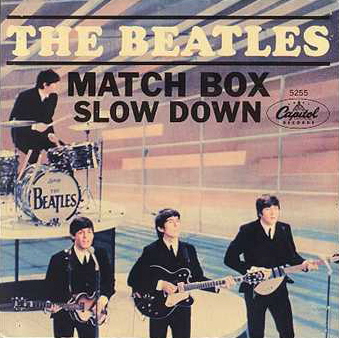 With this rhythm track complete, overdubs began. First was Ringo’s lead vocal which remained single-tracked (his fiasco double-tracking “Matchbox” in June of 1964 showed him not too capable with this procedure) and John and Paul’s background vocals. A brief lead guitar flourish at the song's conclusion was decided to be the only instrumental overdub necessary. By approximately 2 am the next morning, “What Goes On?” was deemed complete, leaving the remaining hour-and-a-half of the session for attempting the recording of an ad-libbed instrumental tentatively titled “12-Bar Original” which was eventually discarded as a bad idea and never saw the light of day (until “Anthology 2,” that is). With this rhythm track complete, overdubs began. First was Ringo’s lead vocal which remained single-tracked (his fiasco double-tracking “Matchbox” in June of 1964 showed him not too capable with this procedure) and John and Paul’s background vocals. A brief lead guitar flourish at the song's conclusion was decided to be the only instrumental overdub necessary. By approximately 2 am the next morning, “What Goes On?” was deemed complete, leaving the remaining hour-and-a-half of the session for attempting the recording of an ad-libbed instrumental tentatively titled “12-Bar Original” which was eventually discarded as a bad idea and never saw the light of day (until “Anthology 2,” that is).
 Both the mono and stereo mixes of “What Goes On?” were created on November 9th, 1965 in Room 65 of EMI Studios by George Martin and engineers Norman Smith and Jerry Boys. Interestingly, the overdubbed lead guitar flourish, which presumably was recorded on a separate track, was inadvertently left out of the mono mix. They remembered to turn up this track during the stereo mix which also gives more clarity to Ringo humming/singing the chorus during the guitar solo and his off-mic twice repeated “in your mind” at the end of the song. The stereo mix features most of the rhythm track and Ringo’s lead vocal primarily on the left channel with George’s lead guitar and the overdubbed harmony vocals primarily on the right channel. Both the mono and stereo mixes of “What Goes On?” were created on November 9th, 1965 in Room 65 of EMI Studios by George Martin and engineers Norman Smith and Jerry Boys. Interestingly, the overdubbed lead guitar flourish, which presumably was recorded on a separate track, was inadvertently left out of the mono mix. They remembered to turn up this track during the stereo mix which also gives more clarity to Ringo humming/singing the chorus during the guitar solo and his off-mic twice repeated “in your mind” at the end of the song. The stereo mix features most of the rhythm track and Ringo’s lead vocal primarily on the left channel with George’s lead guitar and the overdubbed harmony vocals primarily on the right channel.
 In 1986, producer George Martin prepared a new stereo mix of "What Goes On" in preparation for the “Rubber Soul” album appearing on CD. Although somewhat clearer, the mix is essentially the same as the 1965 stereo mix except that both Ringo’s vocal and the background vocals are panned slightly more to the center. In 1986, producer George Martin prepared a new stereo mix of "What Goes On" in preparation for the “Rubber Soul” album appearing on CD. Although somewhat clearer, the mix is essentially the same as the 1965 stereo mix except that both Ringo’s vocal and the background vocals are panned slightly more to the center.
 On July 16th, 2006, Ringo and his “All-Starr Band” had a live rendition of the song recorded in Uncasville, CT, for inclusion on his live album “Ringo Starr And His All Starr Band Live 2006.” Also, in 2008, a recording was made of the song during Ringo’s live set at the Greek Theatre in Los Angeles, California, the result appearing on the album “Live At The Greek Theatre 2008.” On July 16th, 2006, Ringo and his “All-Starr Band” had a live rendition of the song recorded in Uncasville, CT, for inclusion on his live album “Ringo Starr And His All Starr Band Live 2006.” Also, in 2008, a recording was made of the song during Ringo’s live set at the Greek Theatre in Los Angeles, California, the result appearing on the album “Live At The Greek Theatre 2008.”
Song Structure and Style
 The Beatles seemed to go to great lengths to infuse some creativity into the structure and arrangement for this song which, to many ears, appears to be a let-down in comparison to the sparkling and innovative songwriting that surrounds it on the album. I heartily implore you to take a closer look at the results so as to show that this is in fact a well-written song with many elements of an impressive performance. I’m not trying to give anyone the "hard sell," but I don’t think that it should be considered a “bad song,” per se, as may be the general opinion. The unfortunate thing here is that, surrounded by the contents of either British or American album that contains it, it sits among the framework of brilliance. American Beatles fans of the '60s had a hard transition to the British track listing of the compact disc when, where they expected the beautiful “It’s Only Love,” they got what they considered a "clunky" album-filler sung by Ringo. The Beatles seemed to go to great lengths to infuse some creativity into the structure and arrangement for this song which, to many ears, appears to be a let-down in comparison to the sparkling and innovative songwriting that surrounds it on the album. I heartily implore you to take a closer look at the results so as to show that this is in fact a well-written song with many elements of an impressive performance. I’m not trying to give anyone the "hard sell," but I don’t think that it should be considered a “bad song,” per se, as may be the general opinion. The unfortunate thing here is that, surrounded by the contents of either British or American album that contains it, it sits among the framework of brilliance. American Beatles fans of the '60s had a hard transition to the British track listing of the compact disc when, where they expected the beautiful “It’s Only Love,” they got what they considered a "clunky" album-filler sung by Ringo.
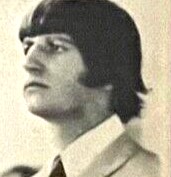 Although the structure of the song was no doubt in place back in the late '50s, we see here another case of a chorus being used as the primary feature, something that was less than usual in their catalog up to this point. The format of the song is ‘chorus/ verse/ chorus/ verse/ chorus (solo)/ verse/ chorus’ (or abababa). Three separate verses with their own lyrics show that a lot of work was put into the writing of the song in getting it to this finished state, Ringo’s “five words” intermingled somewhere within. Although the structure of the song was no doubt in place back in the late '50s, we see here another case of a chorus being used as the primary feature, something that was less than usual in their catalog up to this point. The format of the song is ‘chorus/ verse/ chorus/ verse/ chorus (solo)/ verse/ chorus’ (or abababa). Three separate verses with their own lyrics show that a lot of work was put into the writing of the song in getting it to this finished state, Ringo’s “five words” intermingled somewhere within.
 A brief four-measure introduction, started off by three leading notes from George before the downbeat, establishes the key of E major and begins what has developed into a true country-and-western flavored piece. Being what Ringo has claimed at the time as being his favorite genre of music, The Beatles were undoubtedly bowing to his favor, possibly purposely altering the previously-written composition to his style. In fact, the habit up to this point had been to cater to more of a “hillbilly” sound for most of his vocal contributions, which were a Buck Owens cover and two Carl Perkins “rockabilly” classics. (The unreleased “If You’ve Got Trouble” wouldn’t have fit into this mold.) A brief four-measure introduction, started off by three leading notes from George before the downbeat, establishes the key of E major and begins what has developed into a true country-and-western flavored piece. Being what Ringo has claimed at the time as being his favorite genre of music, The Beatles were undoubtedly bowing to his favor, possibly purposely altering the previously-written composition to his style. In fact, the habit up to this point had been to cater to more of a “hillbilly” sound for most of his vocal contributions, which were a Buck Owens cover and two Carl Perkins “rockabilly” classics. (The unreleased “If You’ve Got Trouble” wouldn’t have fit into this mold.)
 The down-beat of the intro brings in the full band arrangement as we’ll hear unaltered throughout the song, consisting of Lennon on electric rhythm guitar, Paul on bass and Ringo on drums. George plays an interesting introductory guitar phrase not unlike what we’ll hear almost non-stop throughout the remainder of the two minutes and forty-four seconds. The down-beat of the intro brings in the full band arrangement as we’ll hear unaltered throughout the song, consisting of Lennon on electric rhythm guitar, Paul on bass and Ringo on drums. George plays an interesting introductory guitar phrase not unlike what we’ll hear almost non-stop throughout the remainder of the two minutes and forty-four seconds.
Just before the first 20-measure chorus begins, we hear the three-part harmony of Ringo, John and Paul come in with the title of the song, which continues in this fashion for the entire verse. Actually, John and Paul apparently miss the first word, just singing “goes on” the first time around. Just after the first phrase ends with the words “in your heart,” we hear an unidentified voice from the rhythm track give a quick “yelp” of some sort, the first of many during the song.
 The first verse, like the other three, is fourteen measures long. It features Ringo stepping into the spotlight to tell us his story while John and Paul sing background “ooh”s, not unlike those heard in the recently recorded “Michelle.” The melody line used here is quite wordy in comparison to the simple phrases contained in the chorus, which sets off a nice contrast. The verse actually appears to have been cut short in structure after the phrase “tell me why,” a sixteen measure format seeming to be more expected. However, extending it another two measures would have been even more awkward so it's best as is. The first verse, like the other three, is fourteen measures long. It features Ringo stepping into the spotlight to tell us his story while John and Paul sing background “ooh”s, not unlike those heard in the recently recorded “Michelle.” The melody line used here is quite wordy in comparison to the simple phrases contained in the chorus, which sets off a nice contrast. The verse actually appears to have been cut short in structure after the phrase “tell me why,” a sixteen measure format seeming to be more expected. However, extending it another two measures would have been even more awkward so it's best as is.
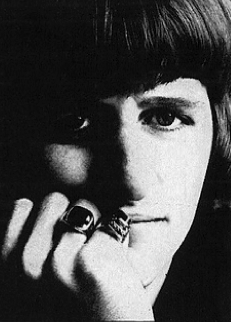 An identical repeat of the chorus comes next, with Ringo hitting his snare drum unusually hard for the first beat. John and Paul once again come in a little bit late with the background harmonies, singing only “goes on.” During the breathing space left in the last two measures of this chorus we hear some more unidentified mumbling from the rhythm track. An identical repeat of the chorus comes next, with Ringo hitting his snare drum unusually hard for the first beat. John and Paul once again come in a little bit late with the background harmonies, singing only “goes on.” During the breathing space left in the last two measures of this chorus we hear some more unidentified mumbling from the rhythm track.
The second verse then appears, which follows the same pattern as the first, the most noteworthy feature being what seems to be the voice of John from the rhythm track saying “tell me why?” just after Ringo sings “a girl like you to lie.” And then afterwards, Lennon’s’ infamous exclamation “I already TOLD you why!”
 What appears to be yet another repeat of the chorus comes next, although they cleverly just sing the first phrase in three-part harmony and, after a “wooh” from McCartney, they continue the structure of the chorus with Harrison vamping an ad-lib solo rather high in the mix for the remainder of these measures. The only problem here is that the listener quite possibly doesn’t understand the structure of this solo section and it becomes somewhat disorienting, not delineating the chord changes from the chorus and wondering when it’s going to conclude. Also disorienting is the solo itself, which meanders along through some phrasings heard elsewhere in the song, leaving the listener feeling that he’s not sure what he’s doing. Ringo is also heard, presumably in the rhythm track, humming/singing along to the chorus to keep himself and the group in time. What appears to be yet another repeat of the chorus comes next, although they cleverly just sing the first phrase in three-part harmony and, after a “wooh” from McCartney, they continue the structure of the chorus with Harrison vamping an ad-lib solo rather high in the mix for the remainder of these measures. The only problem here is that the listener quite possibly doesn’t understand the structure of this solo section and it becomes somewhat disorienting, not delineating the chord changes from the chorus and wondering when it’s going to conclude. Also disorienting is the solo itself, which meanders along through some phrasings heard elsewhere in the song, leaving the listener feeling that he’s not sure what he’s doing. Ringo is also heard, presumably in the rhythm track, humming/singing along to the chorus to keep himself and the group in time.
A final identically-structured verse now comes in which has as its feature the erratic rhythm guitar playing of John Lennon, his playing habitually going into loud staccato “chops” throughout its duration. George just plays quiet assorted fills in the background as if he’s not sure what to do.
 This is followed by the final chorus, which is characterized by Ringo banging away loudly on his snare, noticeably different from the rest of the song. While this doesn’t appear to be an edit in the rhythm track (which could easily be suggested), it is probably just Ringo's way of winding the song down climactically. This last chorus is actually followed by another four-measure section that acts as the conclusion. George’s guitar playing goes diminished while Ringo quietly repeats the final phrase “in your mind” from, presumably, the rhythm track. A final overdubbed guitar flourish from George (unheard in the mono mix) brings the song to a conclusion with a mighty crash on a syncopated beat. The unfortunate final chord sounds out-of-tune but, with the time constraints, was deemed suitable enough. This is followed by the final chorus, which is characterized by Ringo banging away loudly on his snare, noticeably different from the rest of the song. While this doesn’t appear to be an edit in the rhythm track (which could easily be suggested), it is probably just Ringo's way of winding the song down climactically. This last chorus is actually followed by another four-measure section that acts as the conclusion. George’s guitar playing goes diminished while Ringo quietly repeats the final phrase “in your mind” from, presumably, the rhythm track. A final overdubbed guitar flourish from George (unheard in the mono mix) brings the song to a conclusion with a mighty crash on a syncopated beat. The unfortunate final chord sounds out-of-tune but, with the time constraints, was deemed suitable enough.
 Ringo’s drum playing keeps the country swagger going without variation throughout the proceedings except for the concluding cymbal crash. His forte on this song is his vocal work which, within the small amount of range written into his part, is done amazingly well. He keeps on pitch very well with some slight reaching for the notes in the choruses that actually works nicely with the country feel of the song. Arguably his best vocal performance up to this point. Ringo’s drum playing keeps the country swagger going without variation throughout the proceedings except for the concluding cymbal crash. His forte on this song is his vocal work which, within the small amount of range written into his part, is done amazingly well. He keeps on pitch very well with some slight reaching for the notes in the choruses that actually works nicely with the country feel of the song. Arguably his best vocal performance up to this point.
 George is very much the highlight of this song, channeling Carl Perkins for his flavored runs that ooze throughout the arrangement. His "high in the mix" guitar work, while not always confidently played, shows him getting a chance to ad-lib a little more like he used to in the Cavern / Hamburg days which were seemingly a million years before. Guitar solos were much more structured in their recent recordings of that day, Paul even playing them himself at times. George is very much the highlight of this song, channeling Carl Perkins for his flavored runs that ooze throughout the arrangement. His "high in the mix" guitar work, while not always confidently played, shows him getting a chance to ad-lib a little more like he used to in the Cavern / Hamburg days which were seemingly a million years before. Guitar solos were much more structured in their recent recordings of that day, Paul even playing them himself at times.
 Speaking of McCartney, his "walking" bass work is phenomenal on this song, as are his usual harmony vocals. John’s harmonies are also spot-on, expected from someone proud to have an early songwriting attempt finally see the light of day. John substitutes the acoustic guitar flavoring appropriate for this country-tinged song with his electric Rickenbacker while performing an unusual staccato rhythm pattern which does get a little patchy at times. Speaking of McCartney, his "walking" bass work is phenomenal on this song, as are his usual harmony vocals. John’s harmonies are also spot-on, expected from someone proud to have an early songwriting attempt finally see the light of day. John substitutes the acoustic guitar flavoring appropriate for this country-tinged song with his electric Rickenbacker while performing an unusual staccato rhythm pattern which does get a little patchy at times.
Lyrically, this track fits Ringo’s persona perfectly, depicting the "sad and lonely" type who is being mistreated somehow by his significant other. Except for the rockers “Boys" and "I Wanna Be Your Man," his vocal songs up to this point are of this nature.
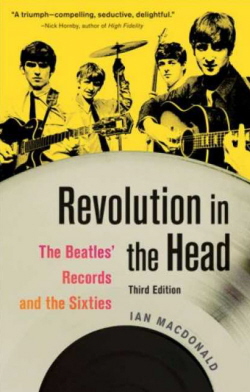 This time around he sees his “future fold” when he spots his girl with another guy. And, to top it off, he had just been with his girl that “morning, waiting for the tides of time” (this Bob Dylan-esque phrase suggested by Ian MacDonald to be the lyrical contribution from Ringo as read in “Revolution In The Head”). The illusion was that everything was fine with their relationship, only to find that it was “easy for (her) to lie.” He wonders “what goes on” in a heart and mind that would cheat so openly. He feels that she didn’t even think of him “as someone with a name,” wondering whether she really wanted to maintain their romance on the sly or whether she meant 'to break his heart and watch him die.' Poor guy! This time around he sees his “future fold” when he spots his girl with another guy. And, to top it off, he had just been with his girl that “morning, waiting for the tides of time” (this Bob Dylan-esque phrase suggested by Ian MacDonald to be the lyrical contribution from Ringo as read in “Revolution In The Head”). The illusion was that everything was fine with their relationship, only to find that it was “easy for (her) to lie.” He wonders “what goes on” in a heart and mind that would cheat so openly. He feels that she didn’t even think of him “as someone with a name,” wondering whether she really wanted to maintain their romance on the sly or whether she meant 'to break his heart and watch him die.' Poor guy!
At least the next time he sings, he’ll be in a happy “Yellow Submarine!”
 US picture sleeve
|
American Releases
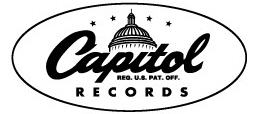 On February 15th, 1966, the US was first exposed to “What Goes On?” as the b-side of Capitol’s first and only make-shift single of the year, pairing it with “Nowhere Man” as the a-side. While this a-side peaked at #3 on the Billboard Hot 100, “What Goes On?” earned a placement on the chart as well, although it only made it up to #81. On February 15th, 1966, the US was first exposed to “What Goes On?” as the b-side of Capitol’s first and only make-shift single of the year, pairing it with “Nowhere Man” as the a-side. While this a-side peaked at #3 on the Billboard Hot 100, “What Goes On?” earned a placement on the chart as well, although it only made it up to #81.
 Because of force of habit, Capitol printed the songwriting credit as “John Lennon – Paul McCartney” at first before they were informed that Ringo was also involved in the writing of this song. Later pressings of the single showed the credit as “Lennon – McCartney – Starkey,” but because of the record's popularity waning by that time, the majority of the circulated copies have the earlier credit, making the “Starkey” copies much rarer today. Because of force of habit, Capitol printed the songwriting credit as “John Lennon – Paul McCartney” at first before they were informed that Ringo was also involved in the writing of this song. Later pressings of the single showed the credit as “Lennon – McCartney – Starkey,” but because of the record's popularity waning by that time, the majority of the circulated copies have the earlier credit, making the “Starkey” copies much rarer today.
 A little over four months later, on June 20th, 1966, “What Goes On?" got its first US album release on Capitol’s “Yesterday…And Today.” Positioned in the not-so-flattering position of next to last on the album, in between the powerhouse tracks “We Can Work It Out” and “Day Tripper,” it was much easier to dismiss this song as album filler than it was in Britain where it started off side two of “Rubber Soul.” "Yesterday...And Today" was then released on January 21st, 2014, as an individual compact disc, both the mono and stereo versions of the album being included on a single CD. Incidentally, this release featured both the "trunk" cover and the "butcher" cover. A little over four months later, on June 20th, 1966, “What Goes On?" got its first US album release on Capitol’s “Yesterday…And Today.” Positioned in the not-so-flattering position of next to last on the album, in between the powerhouse tracks “We Can Work It Out” and “Day Tripper,” it was much easier to dismiss this song as album filler than it was in Britain where it started off side two of “Rubber Soul.” "Yesterday...And Today" was then released on January 21st, 2014, as an individual compact disc, both the mono and stereo versions of the album being included on a single CD. Incidentally, this release featured both the "trunk" cover and the "butcher" cover.
 Sometime in 1967, Capitol released Beatles music on a brand new but short-lived format called "Playtapes." These tape cartridges did not have the capability to include entire albums, so two four-song cartridges of "Yesterday...And Today" came out in this portable format, "What Goes On?" being on one of them. These rare "Playtapes" are highly collectable today. Sometime in 1967, Capitol released Beatles music on a brand new but short-lived format called "Playtapes." These tape cartridges did not have the capability to include entire albums, so two four-song cartridges of "Yesterday...And Today" came out in this portable format, "What Goes On?" being on one of them. These rare "Playtapes" are highly collectable today.
 The first time the original British "Rubber Soul” album was made available in America was on the "Original Master Recording" vinyl edition released through Mobile Fidelity Sound Lab in June of 1984. This album included "What Goes On?" and was prepared utilizing half-speed mastering technology from the original master tape on loan from EMI. This version of the album was only available for a short time and is quite collectible today. The first time the original British "Rubber Soul” album was made available in America was on the "Original Master Recording" vinyl edition released through Mobile Fidelity Sound Lab in June of 1984. This album included "What Goes On?" and was prepared utilizing half-speed mastering technology from the original master tape on loan from EMI. This version of the album was only available for a short time and is quite collectible today.
 Speaking of “Rubber Soul,” its first compact disc release was on April 30th, 1987 and featured the new 1986 George Martin stereo mix of “What Goes On.” This fourteen-track version of the album also received a vinyl release in the US on July 21st, 1987. This album was then remastered and re-released on September 9th, 2009 on CD and on vinyl on November 13th, 2012. Speaking of “Rubber Soul,” its first compact disc release was on April 30th, 1987 and featured the new 1986 George Martin stereo mix of “What Goes On.” This fourteen-track version of the album also received a vinyl release in the US on July 21st, 1987. This album was then remastered and re-released on September 9th, 2009 on CD and on vinyl on November 13th, 2012.
 On January 24th, 1996, the original Capitol single was re-released in the Cema series “For Jukeboxes Only.” This single was printed on green vinyl and is quite collectible today. On January 24th, 1996, the original Capitol single was re-released in the Cema series “For Jukeboxes Only.” This single was printed on green vinyl and is quite collectible today.
September 9th, 2009 was the release date for the CD box set “The Beatles In Mono,” on which, as in the case of all of the “Rubber Soul” tracks, “What Goes On?” is featured in both the original 1965 mono and stereo mixes. The vinyl edition of this box set was first released on September 9th, 2014.
 In promotion of the 2014 box set "The US Albums," a rare 25-song sampler CD was manufactured for limited release on January 21st, 2014, this containing the mono mix of "What Goes On." In promotion of the 2014 box set "The US Albums," a rare 25-song sampler CD was manufactured for limited release on January 21st, 2014, this containing the mono mix of "What Goes On."
 On July 7th, 2008, a live performance of the song was included on the album “Ringo Starr & His All Starr Band Live 2006.” Also, his album “Live At The Greek Theatre 2008,” which came out on July 27th, 2010, features a new rendition of “What Goes On." The song was also included in the 2CD set "Live At The Greek Theatre 2019," which was released on November 25th, 2022, this also being released on on 2CD/Blu-Ray set that same day. On July 7th, 2008, a live performance of the song was included on the album “Ringo Starr & His All Starr Band Live 2006.” Also, his album “Live At The Greek Theatre 2008,” which came out on July 27th, 2010, features a new rendition of “What Goes On." The song was also included in the 2CD set "Live At The Greek Theatre 2019," which was released on November 25th, 2022, this also being released on on 2CD/Blu-Ray set that same day.
Live Performances
 Although The Beatles continued to feature a Ringo vocal during their live performances after “Rubber Soul” had been released, they continued playing “Act Naturally” in late 1965 and then delved back to the 1963 rocker “I Wanna Be Your Man” throughout 1966. They apparently didn’t feel the more recent “What Goes On?” had the required enthusiastic stage presence and decided to bypass it entirely for live performances. Although The Beatles continued to feature a Ringo vocal during their live performances after “Rubber Soul” had been released, they continued playing “Act Naturally” in late 1965 and then delved back to the 1963 rocker “I Wanna Be Your Man” throughout 1966. They apparently didn’t feel the more recent “What Goes On?” had the required enthusiastic stage presence and decided to bypass it entirely for live performances.
Even Ringo himself omitted the song from his live "All-Starr Band" set lists for many years. He began these tours in 1989, but didn't think to include "What Goes On?" until 2006, reprising it on stage in 2008, during his 2012-17 tour, his 2018-19 tour, and then his 2022 tour.
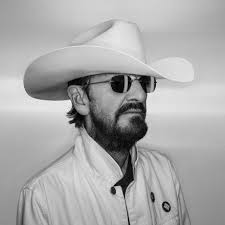 On January 14th and 15th, 2025, Ringo performed "What Goes On?" at the Ryman Auditorium in Nashville, Tennessee for the CBS television special "Ringo & Friends At The Ryman," which was broadcast on March 10th, 2025. Ringo played drums on this song with country artist Molly Tuttle on vocals along with various other country musicians. This US television special was produced in celebration of Ringo's current country album "Look Up." On January 14th and 15th, 2025, Ringo performed "What Goes On?" at the Ryman Auditorium in Nashville, Tennessee for the CBS television special "Ringo & Friends At The Ryman," which was broadcast on March 10th, 2025. Ringo played drums on this song with country artist Molly Tuttle on vocals along with various other country musicians. This US television special was produced in celebration of Ringo's current country album "Look Up."
Conclusion
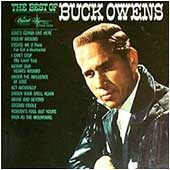 It seemed only natural that, given Ringo’s penchant for country music, the group would take their new "original compositions only" policy and concoct a C&W song for him to sing for their current album. The previous album's “Act Naturally” worked well enough to inspire Lennon and McCartney to adapt a previously written song to that genre of music, going as far as mimicking the rhythm and style of the Buck Owens classic right down to the three quarter-note guitar introduction. Although “What Goes On?” lacks the confidence and sheen of the previous Ringo song, it still stands as testimony to The Beatles’ chameleon-like ability to convincingly tackle any task needed. It seemed only natural that, given Ringo’s penchant for country music, the group would take their new "original compositions only" policy and concoct a C&W song for him to sing for their current album. The previous album's “Act Naturally” worked well enough to inspire Lennon and McCartney to adapt a previously written song to that genre of music, going as far as mimicking the rhythm and style of the Buck Owens classic right down to the three quarter-note guitar introduction. Although “What Goes On?” lacks the confidence and sheen of the previous Ringo song, it still stands as testimony to The Beatles’ chameleon-like ability to convincingly tackle any task needed.
Song Summary
“What Goes On?”
Written by: John Lennon / Paul McCartney / Richard Starkey
-
Song Written: 1957 to November 4, 1965
-
Song Recorded: November 4, 1965
-
First US Release Date: February 15, 1966
-
US Single Release: Capitol #5587 (b-side to “Nowhere Man”)
-
Highest Chart Position: #81
-
-
British Album Release: Parlophone #PCS 3075 “Rubber Soul”
-
Length: 2:44
-
Key: E major
-
Producer: George Martin
-
Engineers: Norman Smith, Ken Scott, Graham Platt
Instrumentation (most likely):
-
Ringo Starr – Lead Vocals, Drums (1964 Ludwig Super Classic Black Oyster Pearl)
-
George Harrison – Lead Guitar (1963 Gretsch 6119 Tennessean)
-
Paul McCartney - Bass Guitar (1964 Rickenbacker 4001S), Harmony Vocals
-
John Lennon - Rhythm Guitar (1964 Rickenbacker 325), Harmony Vocals
Written and compiled by Dave Rybaczewski
|
IF YOU WOULD LIKE TO MAKE A DONATION TO KEEP THIS WEBSITE UP AND RUNNING, PLEASE CLICK BELOW!
Sign Up Below for our MONTHLY BEATLES TRIVIA QUIZ!
|